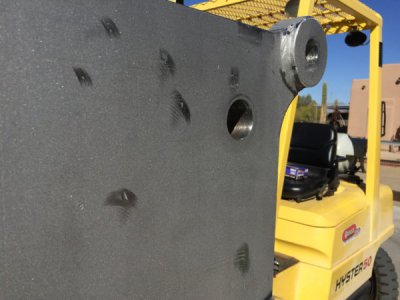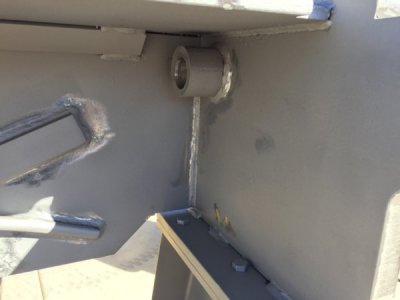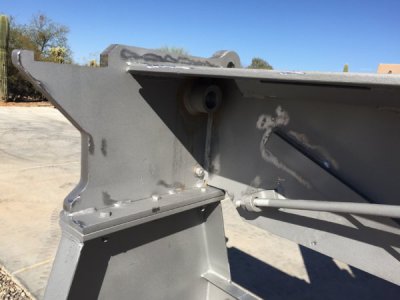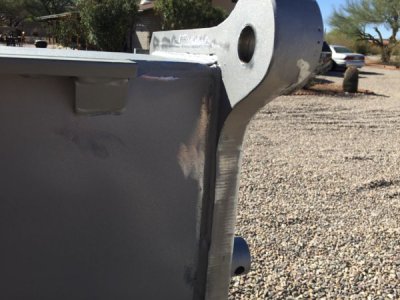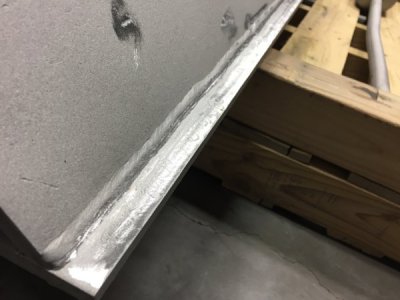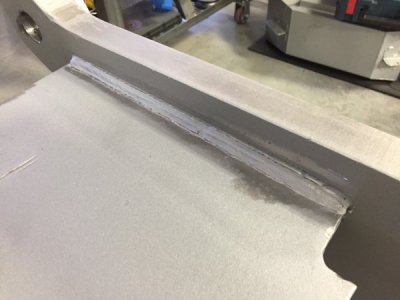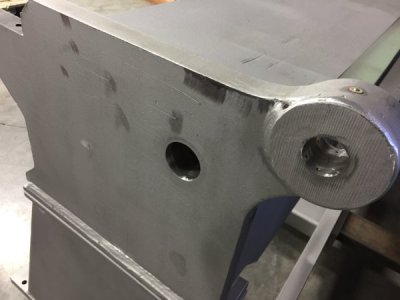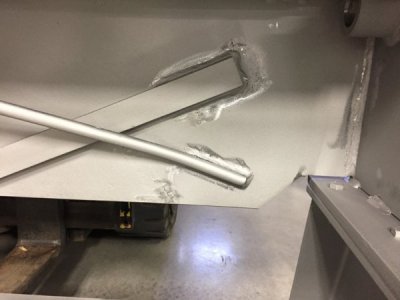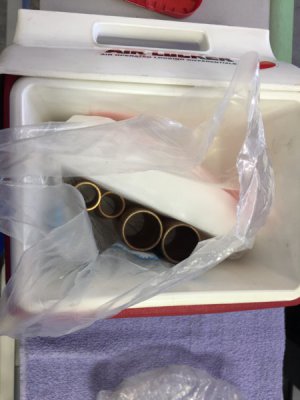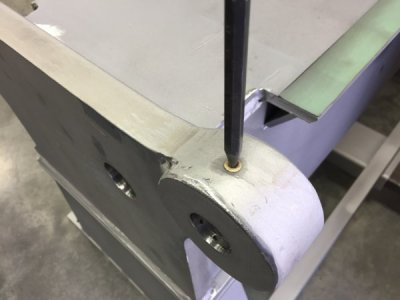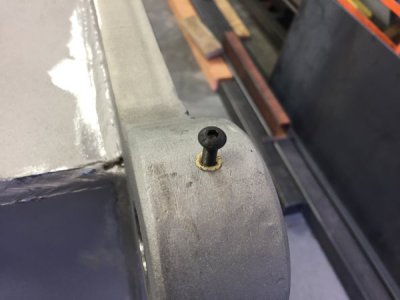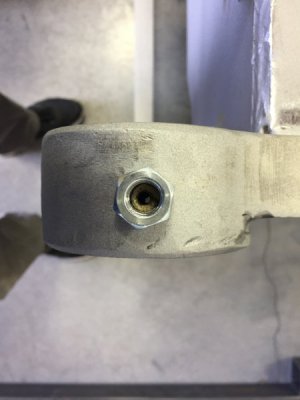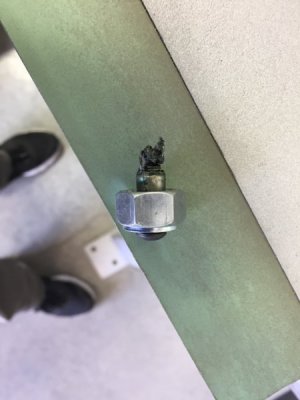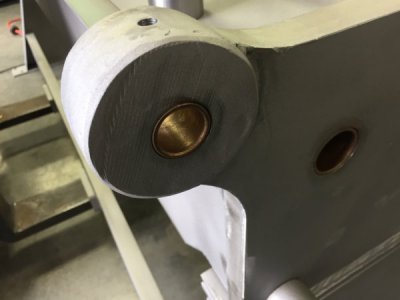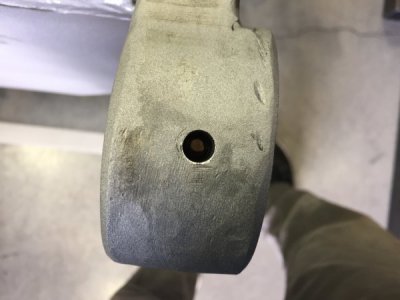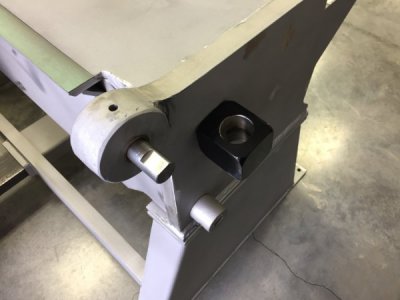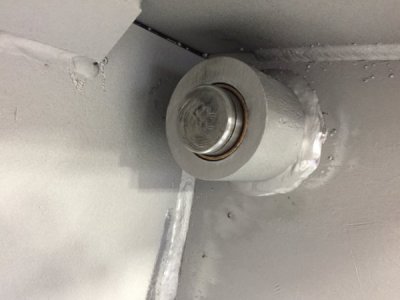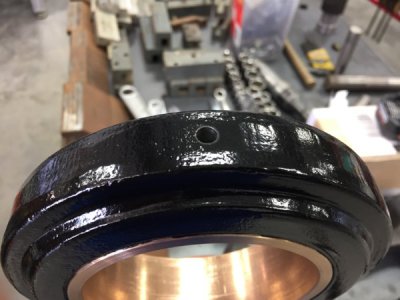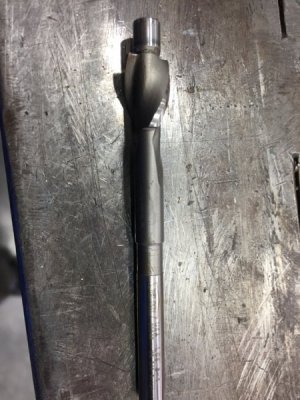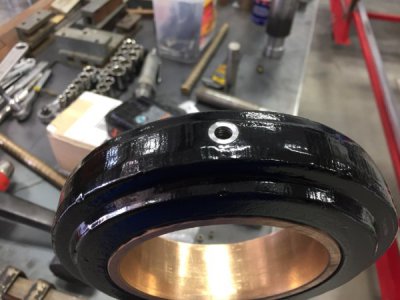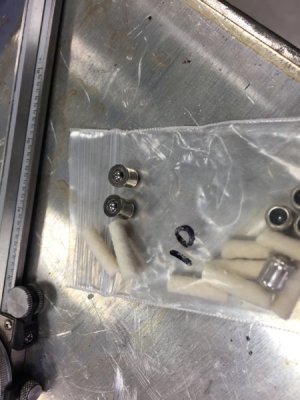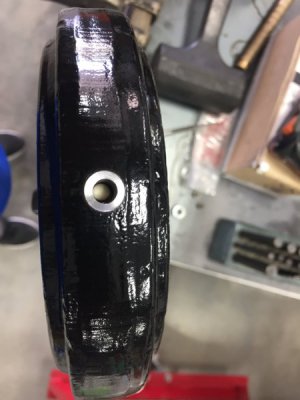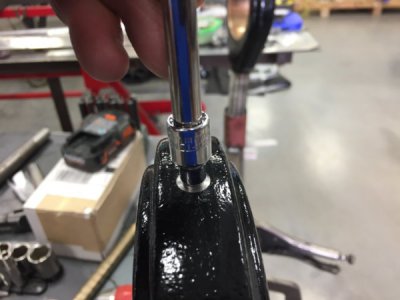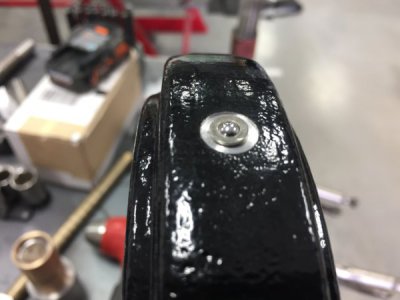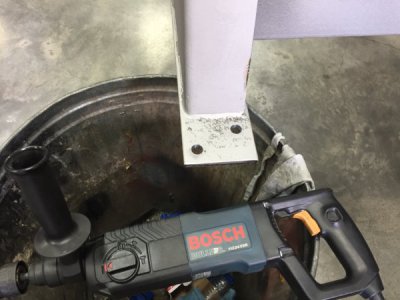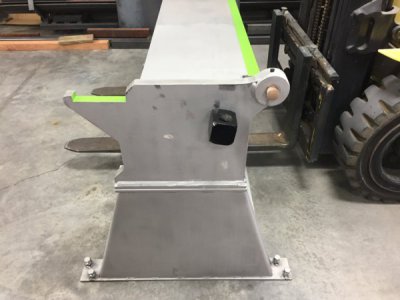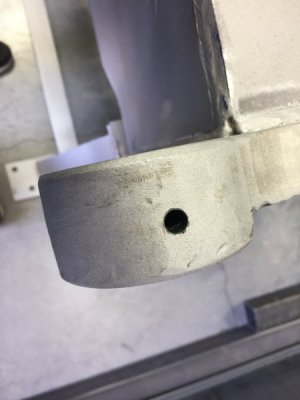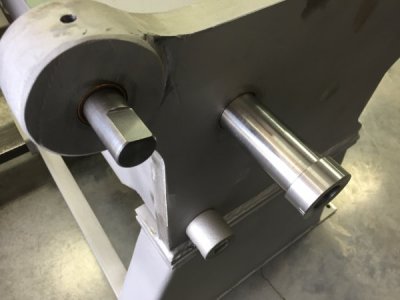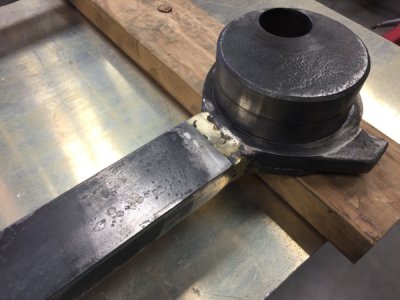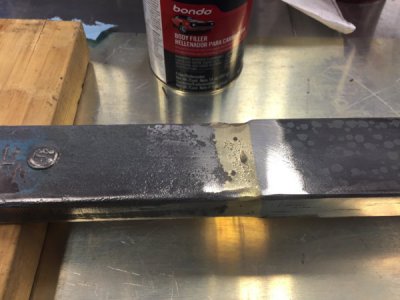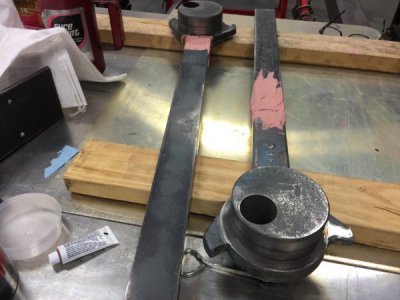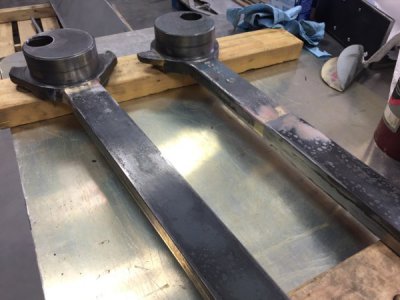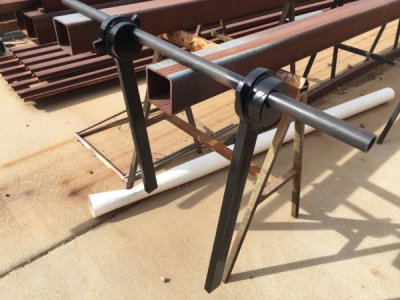Well brethren, I'm pleased to report that the two stubborn bushings are out. Those things fought me all the way out and required some heat on the right's inside boss. I had a section of 3/4-10 all thread on hand, but after experiencing two failed attempts I took Greg's (f350ca) advice and purchased 3' of B7 3/4-16 plain, hardened washer and grade 8 high hex nut. I learned that threaded rod does not come in the same grades as bolts like grade 2,5,and 8. They have their own grade schedule , B7 rod is between a grade 5 and 8 in a bolt.
The good part of the story (besides getting those bushings out) is the original arbor or press tool was still employed with only a 2" deep threaded hole added for the rod to secure to. The second part of the tool was a section of 2.5" pipe sch.40 x 3.75" long faced off at both ends and the inside weld seem taken down 1/2" from one end. A piece of left over .750" CR bar was cut and used as an end plate.
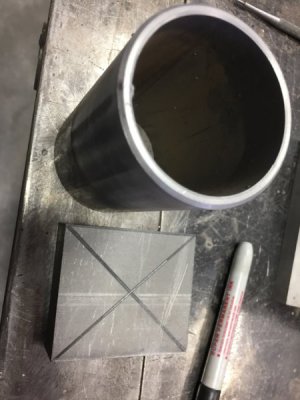
After drilling the 1/2" hole on the endplate, I was hesitant to chuck up the holding bolt directly into the Bison so I split a small section of copper tubing to protect the jaws.
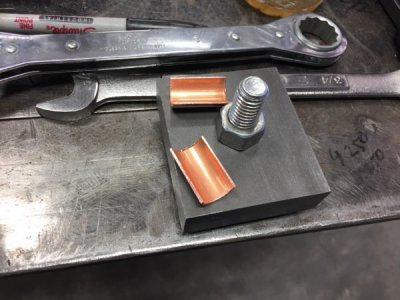
Indicated as close as possible and center drilled the bolt head to turn the square material between centers.
Here you can see the copper protecting the chuck jaws.
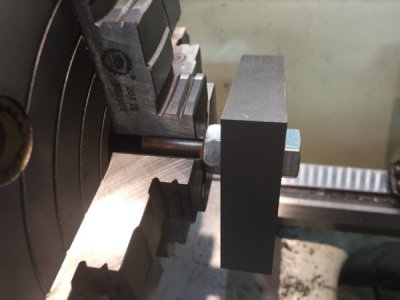
I saved the facing for later as I knew the setup was less than ideal. Turning between centers I took .060-.080" DOC until I had a round profile.
Then dialed in the OD of the pipe.I used a cheap live center for this operation as I had pretty good pressure securing the setup.
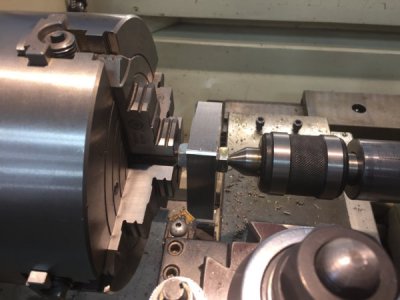
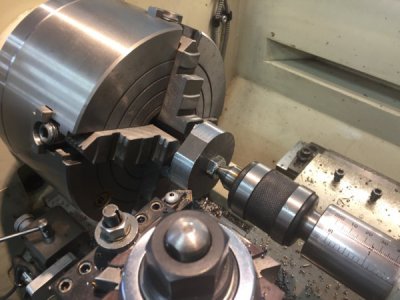
Once I had the OD, I took the setup apart and removed the 1/2" bolt. Re chucked, face what will be the inside and turned a shoulder to fit the ID of the pipe. I used a 1/2" bolt (hole) knowing that the possibility of the hole would be slightly off center with the turning method I used. I needed this tool to have a perfect centered pull when used. This allowed me to bore the hole to final diameter after the end cap was welded to the pipe.
Here you can see the area or the inner weld seem that was relieved for the cap to fit.
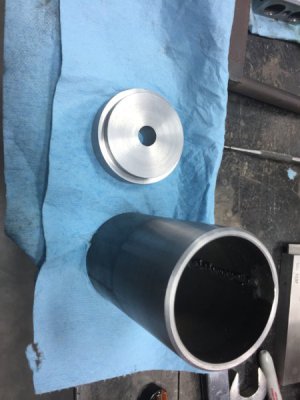
No way the .750" thick cap will deflect under pressure.
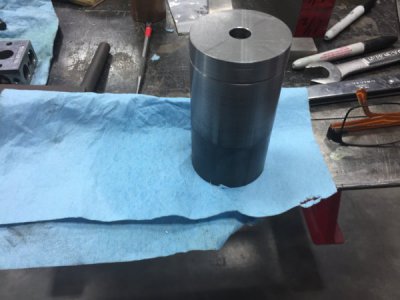
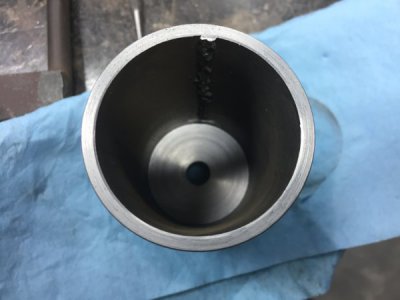
Tacked three 1/2"-3/4" (autogenous) with the TIG. For those who might not know, Autogenous is simply using heat with no filler rod. For this application, only enough weld to secure the end cap for final facing and boring.
Re indicated and faced the outside, then bored to final diameter.
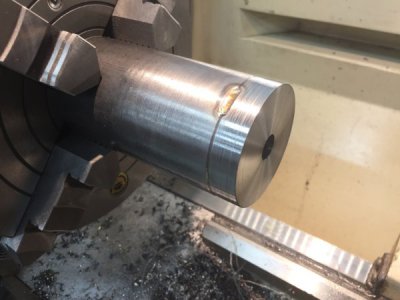
Having used similar setup in the past, I knew the center hole would be slightly off but once bored to final diameter, everything was true.
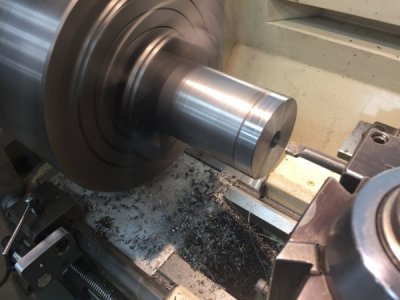
After de-burring the outside the piece was flipped and a large drill was used to reach for de-burr/chamfer the inside.
200 rpm and done by feel.
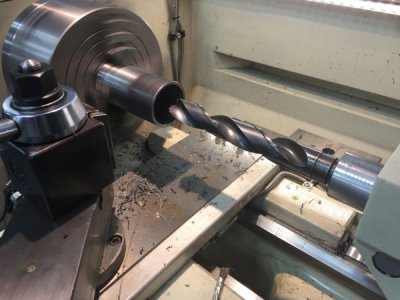
Ready for use!
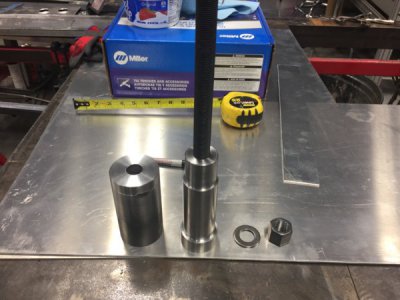
The arbor is now used from the inside and pipe sleeve on the outside to "draw out the bushings.
The set up: Inside
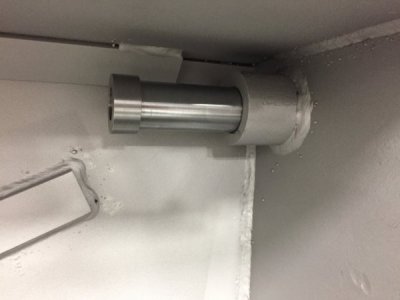
Outside.
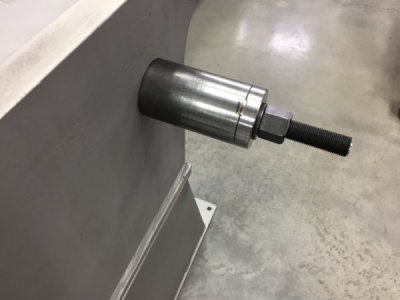
Overall.
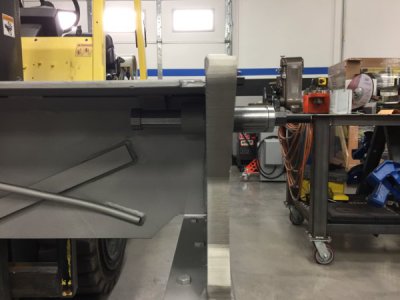
A liberal amount of anti-seize was applied on the threads to prevent galling.
BAM! Success!
I will
never underestimate the removal of bushings again. I think installation will go well with the use of dry ice as Mike (FOMOGO) suggested. I have froze bearing races in the past prior to pressing with success but will defiantly use this to press in the new bushing
These are the old bushings, the tool worked very well without damage to said bushings.
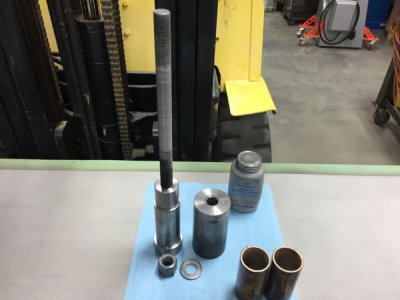
Thanks for all the tips and tricks guys. I should have invested the time in building this tool from the get go. I'm always learning new lessons.
Turn and burn!
Thanks for stooping by,
Paco


















